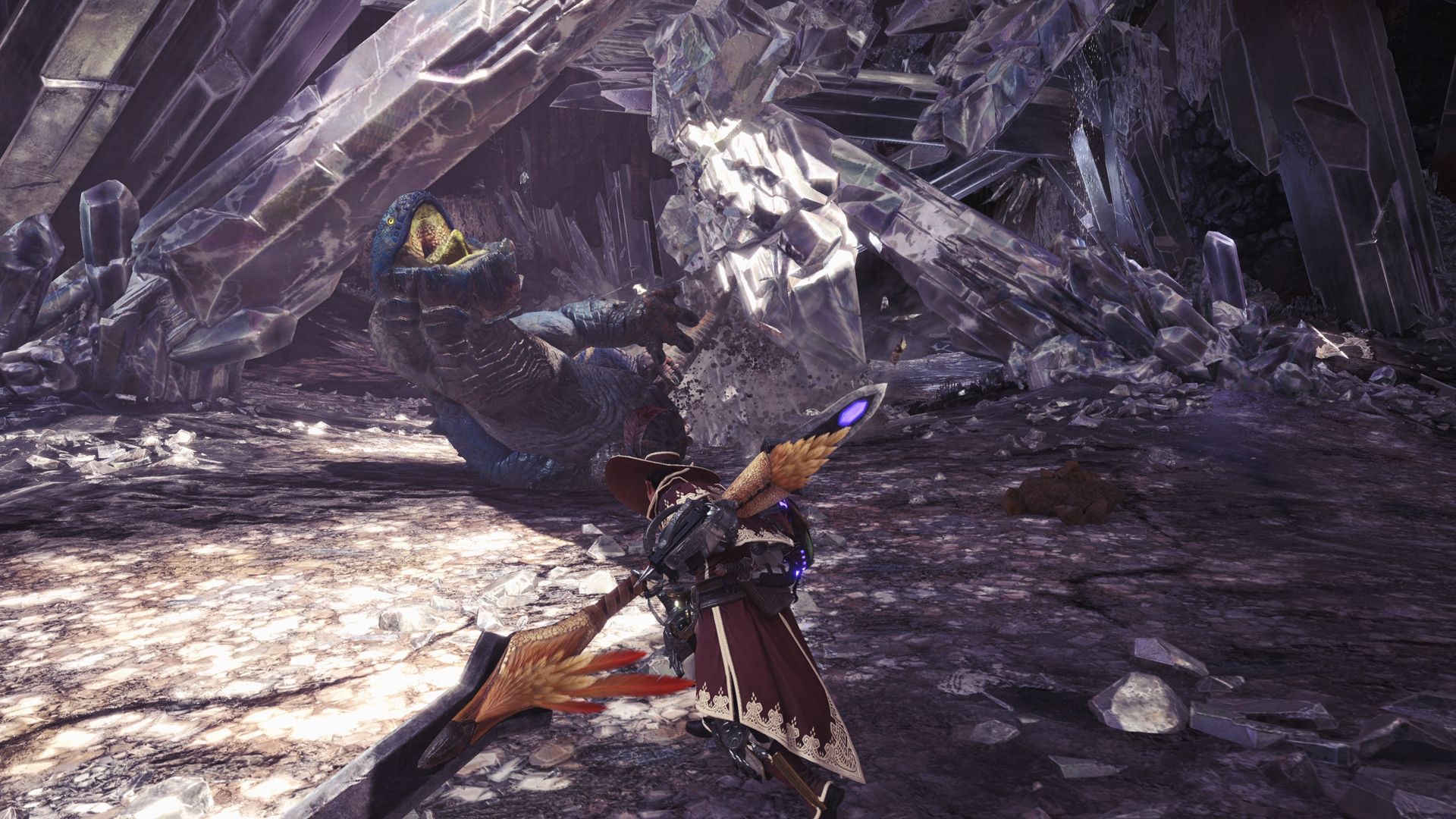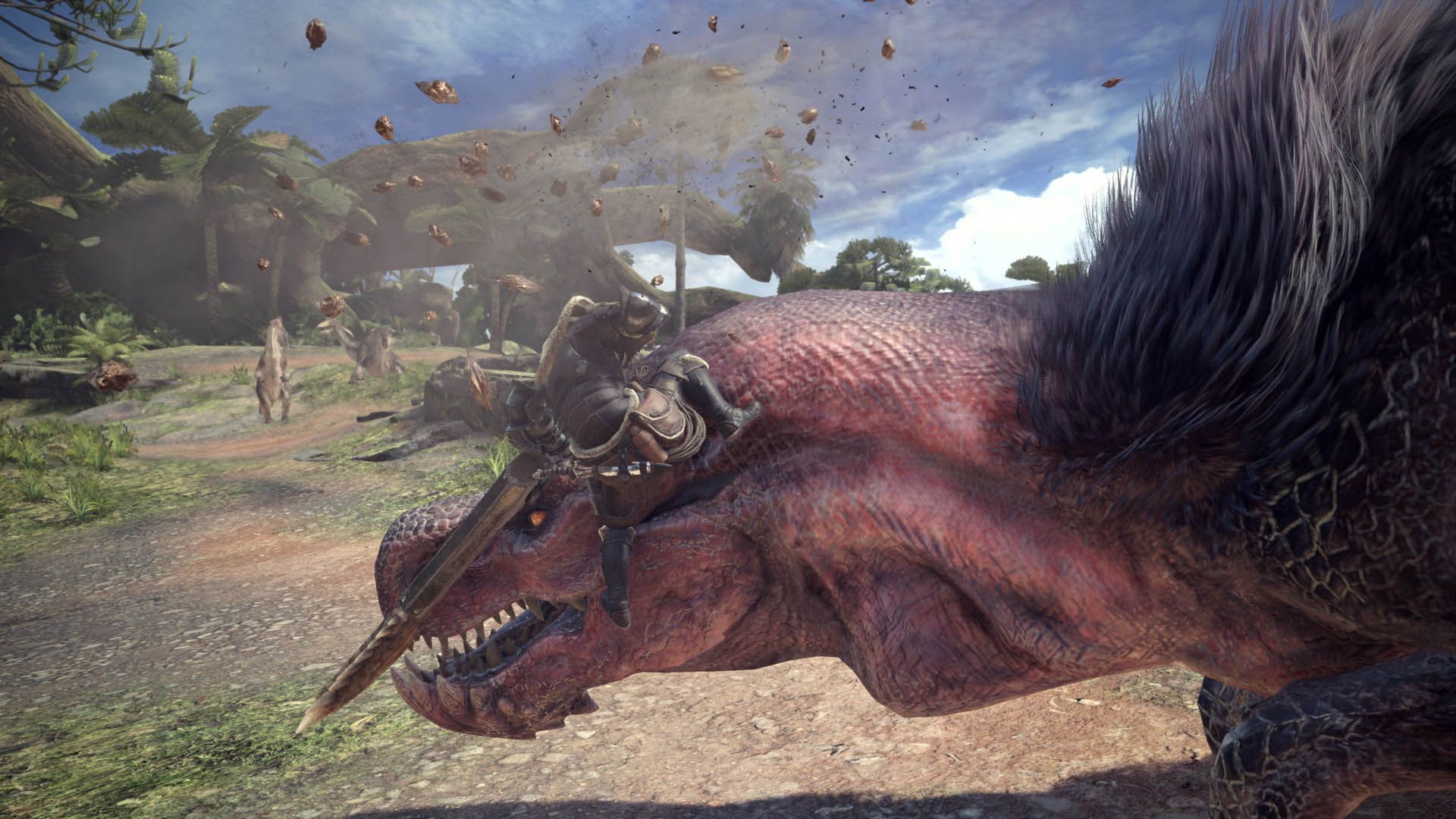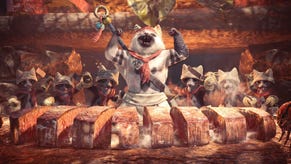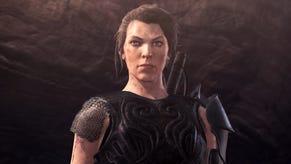How the cat jokes and beast names of Monster Hunter: World are translated into English
A furr-ly good job
“I do remember there being some pretty bad cat puns that we all wish we could unhear," Marco Bombasi tells me. He’s the localisation director for Monster Hunter: World, the man in charge of translating the dinosaur-harvesting game from its original Japanese into other languages, including English. Every player in Monster Hunter gets a cat sidekick who says things like “Hello Meow-ster”, so I’ve asked Bombasi if writing the game's ubiquitous cat punnage ever produced wordplay so heinous it managed to give the team paws for thought. He says yes, it got bad.
“So bad, in fact, that our editor and resident cat pun professional, David, had to write a rulebook on acceptable usage.”
“We were toying with names for the Tailraiders,” adds Andrew Alfonso, a design consultant on the game, “the small monsters your Palico can befriend on your behalf, and one idea I came up with was ‘Compawdre’. We didn’t use that one, thankfully.”
There’s a lot to love about Monster Hunter: World, my introduction to the series of haute couture-asaurus slay ‘em ups, but it was the Palico cat companions that clawed me in for good. Not only are they able to completely misunderstand the words ‘vegetable platter’ and roast you an entire chicken in about 12 seconds, they also share my love for criminal puns. The wordplay is such a huge part of the Palico’s character, as well as World’s tone in general, it's sometimes easy to overlook the work that went into adapting it (and in many cases, creating it) for the game’s English-language release.
The process fascinated me, so I skillfully buried some shock traps under a pile of dead leaves and waited patiently until I’d snared some of Monster Hunter: World’s localisation team to answer my questions.
It was email. I did it with email.
“Pretty much everything starts from the English localisation,” Alfonso tells me when I ask how often the Palico’s pun-filled speech has a direct equivalent in the original Japanese. “The Japanese are able to do some real fancy wordplay that often involves homonyms, and these show up in other places in the game, such as the quest names.” The Palicospeak, it turns out, is mostly unique to the Western version.
“In Japanese, the Felynes have a particular of speaking but the ‘meow’ sound is a consistent thing in their text. Way back during Monster Hunter 4 Ultimate we felt that sticking strictly to the Japanese would be irritating to read for players because people don’t like repeated text so much, so instead we kept the spirit of the Japanese by using puns instead of tacking on ‘meow’ at the end of each sentence."
“While it’s not impossible, it’s pretty difficult to come up with one-to-one equivalents for the puns in Japanese,” adds Bombasi. “Take this sentence for example: ‘Kari ni iku no ha nyan (nan) te tanoshii! Mata itsuka ikitai nyaa (na)!’ This literally translates to: ‘What fun it is to go out on hunts! I’d really like to go again sometime!’”
In Japan, they wouldn’t say a cat goes “meow”, they say it goes “nyan”. So in Bombasi’s example, the word “nan” (what) and the sentence ending particle “na” are pronounced by the Palico as “nyan” and “nyaa!” - the sound cats make.
“What we’d do is rewrite the sentence a bit to include a cat pun, while keeping the original meaning of the sentence intact: ‘I love going out on hunts! Purr-lease let me tag along sometime!’ So, the majority of the time, the puns that you see in English and the other localized languages don’t match the puns in Japanese, but are worked into the translations by coming up with other ways to word the dialogue.”
This level of attention to tone, if not the exact letter of the original script, is a major focus during translation .
“At the beginning of the localisation,” says Alfonso, “Marco and I had several meetings with Yuya Tokuda, the main director of World, about how we wanted to name things like monsters, locales, menus, etc. I think both Tokuda-san and Fujioka-san, the executive director on World, are open-minded guys but we needed [to] research a ton and brainstorm good ideas to convince them how changing things in our way would actually make players understand the original Japanese. I think some monster names took several weeks to finish!”
As an example, Alfonso mentions Kulve Taroth - a black dragon with curled, shining golden horns. The monster’s Japnaese name is Mamu Tarot, a combination of biblical demons Mammon and Astaroth. They kept Tarot, adding the ‘h’ to match the English spelling of Astaroth. Mammon, however, sounded too much like mom, or ma’am. Director Yaya Tokuda gave the team keywords to focus on: Gold, treasure, greed, hoarding, and also suggested something “feminine-sounding.
“So we came up with the name Kulve,” Alfonso tells me, “which is based on Gullveig, a being found in Norse mythology. Both Mammon and Gullveig are associated with gold, and have an appetite for wealth, and Tokuda-san understood that by changing the name, we were actually letting his real ideas be expressed.”
This attention to detail also extends to the quest names, says Alfonso.
“The last quest in World, the battle with Arch-Tempered Nergigante is called ‘The Heralds of Destruction Cry’. The Japanese quest name was based on a famous novel written by Seishi Yokomizo, called ‘The Devil Blows a Whistle’ (悪魔が来りて笛を吹).
"One quest that totally didn’t work in English was the one where you have a hunt a tempered Bazelgeuse, called ‘No Tomorrow for Usurpers’. The Japanese quest was based on the Japanese title of the movie Bonnie and Clyde, which roughly translates to “No Tomorrow for Us” (秩序なき者に明日は無い). We just [went] along with the Japanese on that one because we didn’t have a good way of translating that back to English.”
If it comes down to a choice between personal favourites and staying close to the spirit of the Japanese, though, Alfonso is happy to take one for the team.
“There’s an event quest in World called ‘Kirin the Myth’, where you could read it as ‘Kirin, the Myth’ or ‘Killing the Myth’. I really wanted to call it ‘Kirin Me Softly’ but despite everyone on the team saying to go for it, I went with the name we have now since it was more in line with the original Japanese.”
You obviously can’t see me writing this, but imagine I’m saluting my screen in admiration at the sort of willpower required here. Kill your darlings, as they say.
The team also work closely with voice actors to keep their vision for the localisation consistent. While the Japanese opt for straightforward casting, the localization team take a different approach.
“For English, we expressed to Tokuda-san and Fujioka-san that we wanted this game to really feel like [a] world in every sense of the word. It should feel like people from all over the world of Monster Hunter are coming together to solve this Elder Crossing mystery, so when we were writing our profiles for the characters, we wanted some of them to have certain accents.”
Alfonso mentions the French lilt of the resource manager, the pirate brogue of the Smithy, and the British wyverians, as examples.
“Another thing that probably goes unnoticed is that the Japanese, for the most part, plays it straight in voiced dialogue, but in English we have a lot of little voice efforts placed here and there to express certain things. A good example of this would be in the cutscene where the Barroth first appears. The Handler runs past the cart the hunter is escorting, but then doubles back to help push it away from danger. In English when she overshoots the cart, she looks back and gives a desperate, frustrated ‘Aw dang it!’ kind of sound bit to convey her emotion and the danger she’s in.”
Monster Hunter: World’s many expansions have also bought about new translation opportunities. Bombasi fondly recalls working with CD Projekt Red as part of a crossover quest featuring the Witcher to ensure their localisations were consistent, and that their translations of Geralt’s dialogue sounded like something that would come from the Witcher himself.
“It was also extra cool to hear the voice actors for Geralt in each language read lines we translated!” says Bombasi .
Despite an evident love for games, Bombasi admits that he doesn’t get to play the game he’s working on as much as fans might think.
“I’d say about 70% of our time is spent with our faces buried in translation files. We do get to play the game a little bit during linguistic testing when we check text implementation, but it’s no way near the amount of time spent in Excel, cranking away at translations in order to meet deadlines.
“The localisation team is usually the last team able to start their work,” he says, “because the Japanese text assets need to be finished so there is a source to work off... Once we get the text and start translating it, we’ll get frequent text updates from the Japanese side, which we have to manage and make sure they get reflected into 12 other languages that are already in mid-translation. It’s this overlap that can be challenging, but it’s what needs to be done in order to get everything finished in time.”
Both Bombasi and Alfonso believe that a good translation shouldn’t stand out too strongly. Their aim, above all, is to make their world feel natural and familiar, no matter where hunters happen to start their journey.
“You can think of the Japanese language as a violin that can play music in a certain way,” says Alfonso, “but then you have English, which is like a piano that can play the same notes, but they sound different and can do things that the violin can’t, and vice versa. You need to take advantage of the strengths of each instrument to make people appreciate the music.”
“If we do our jobs well,” says Bombasi, “players should be able to enjoy the game without ever knowing we were there.”
















